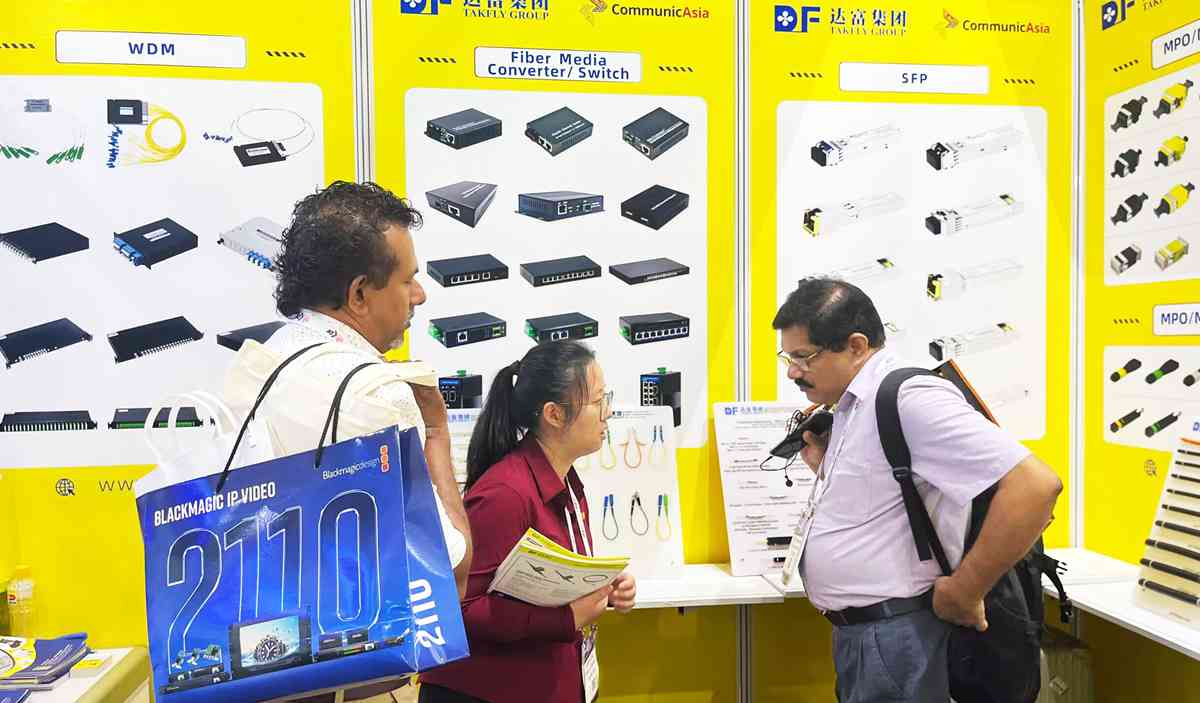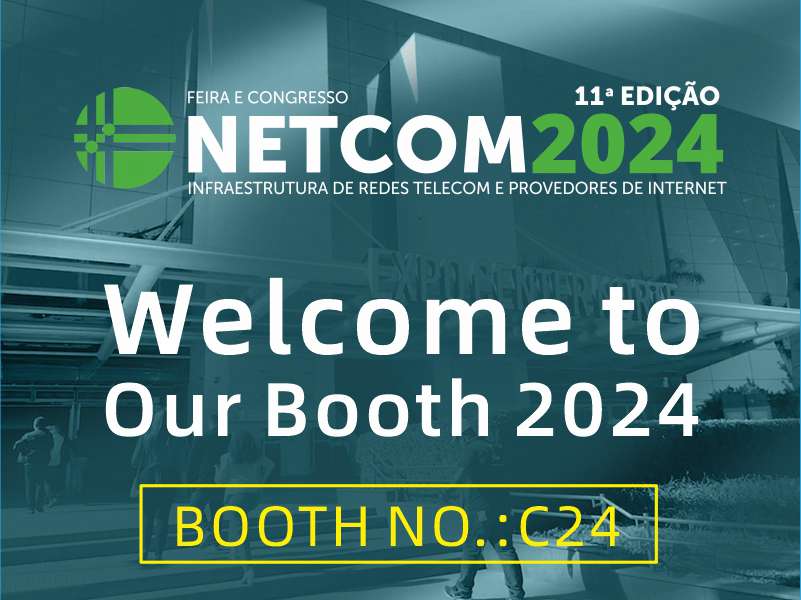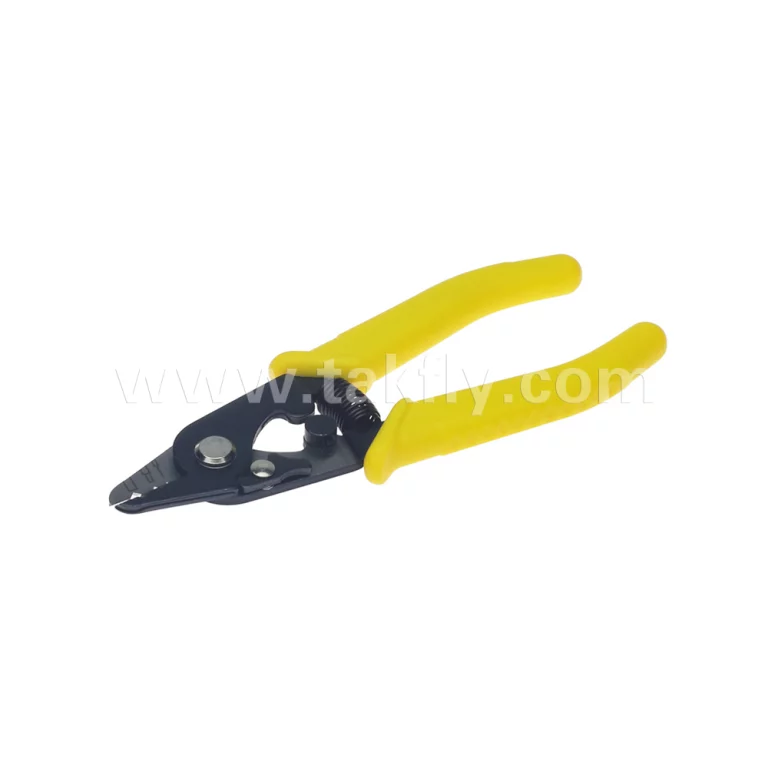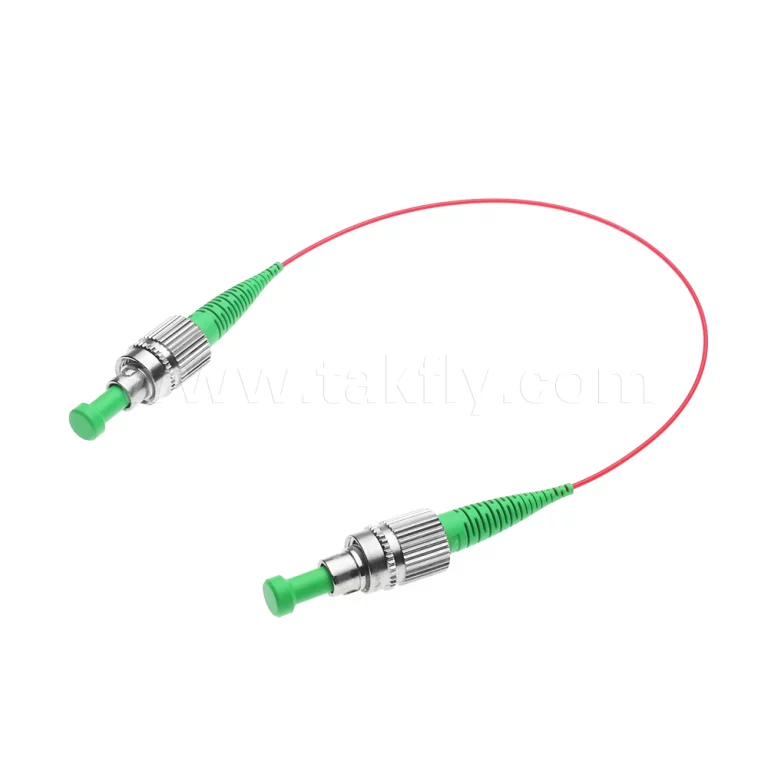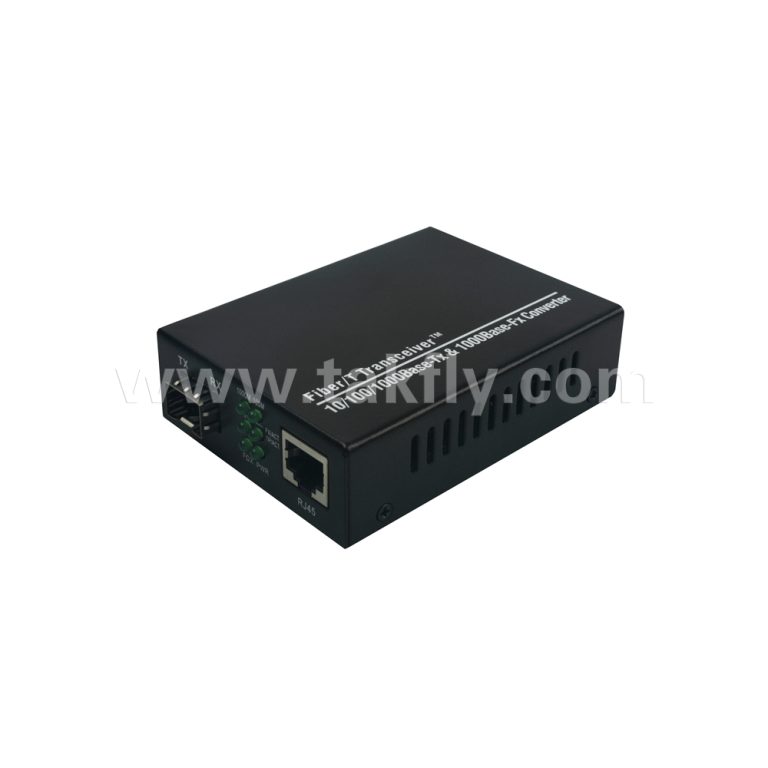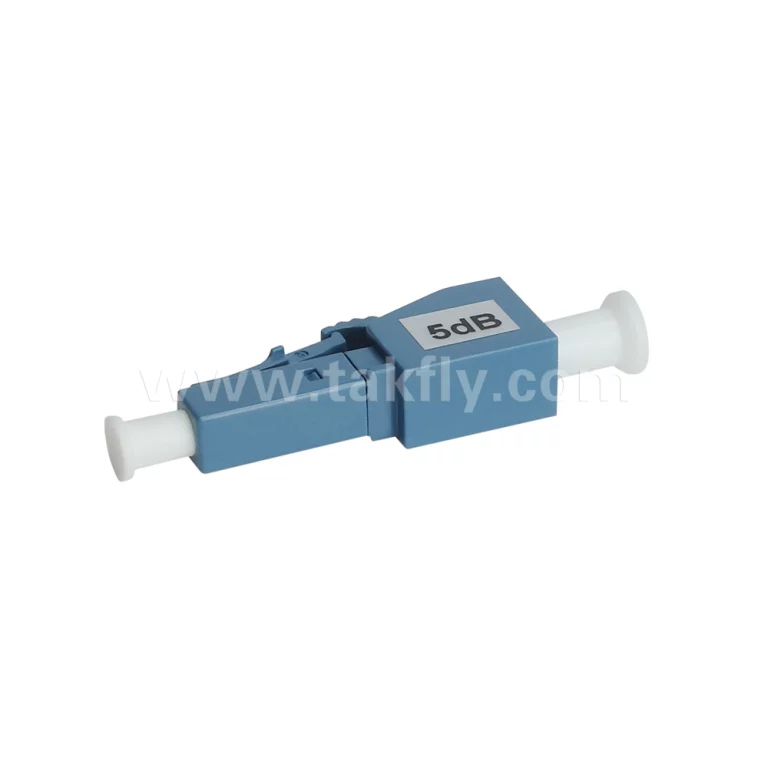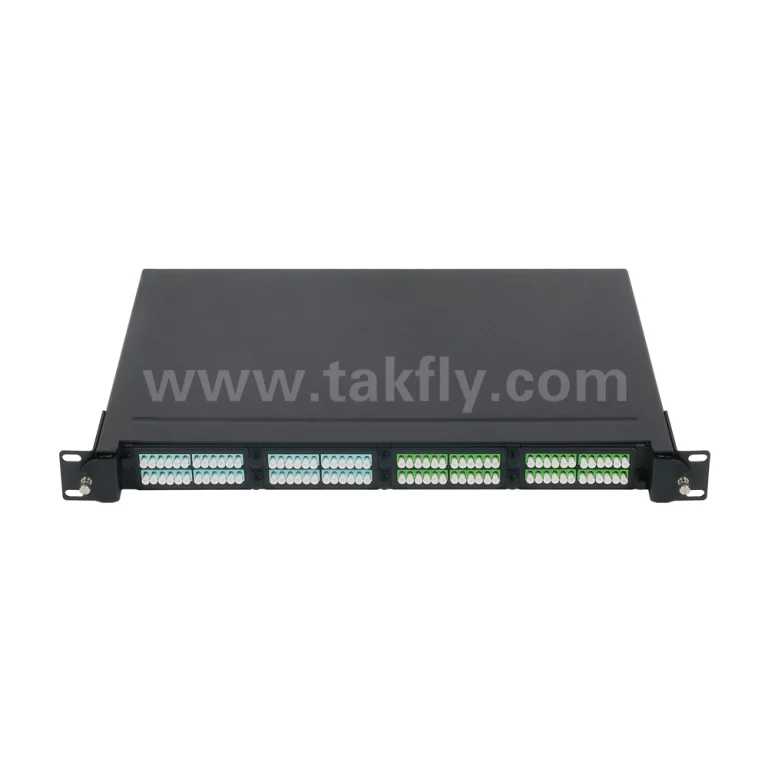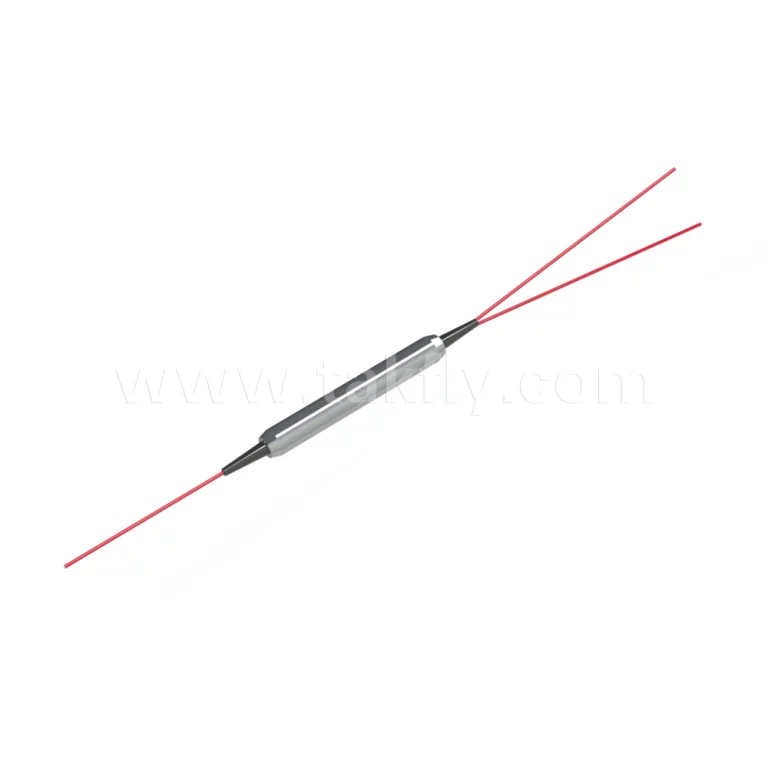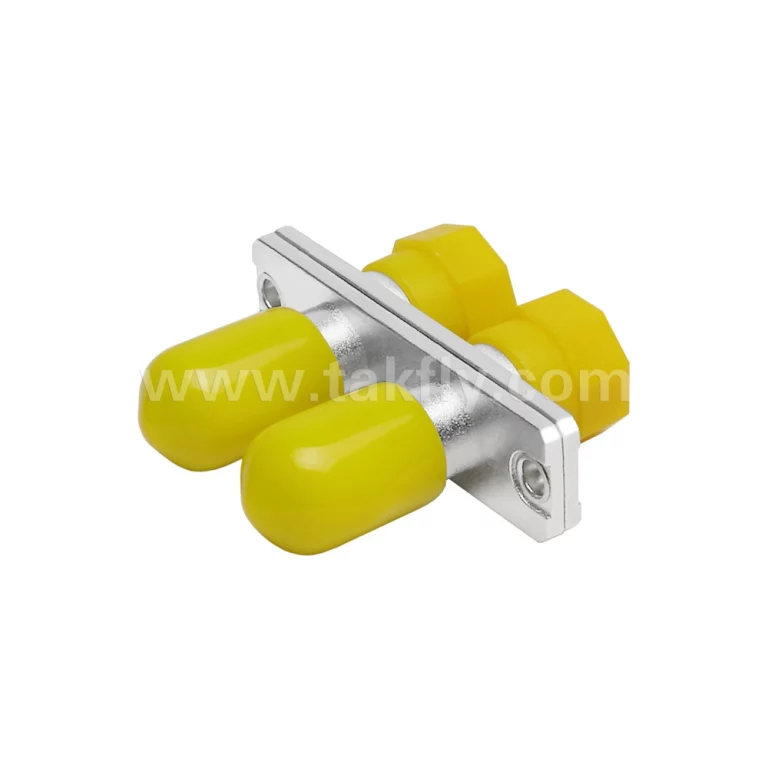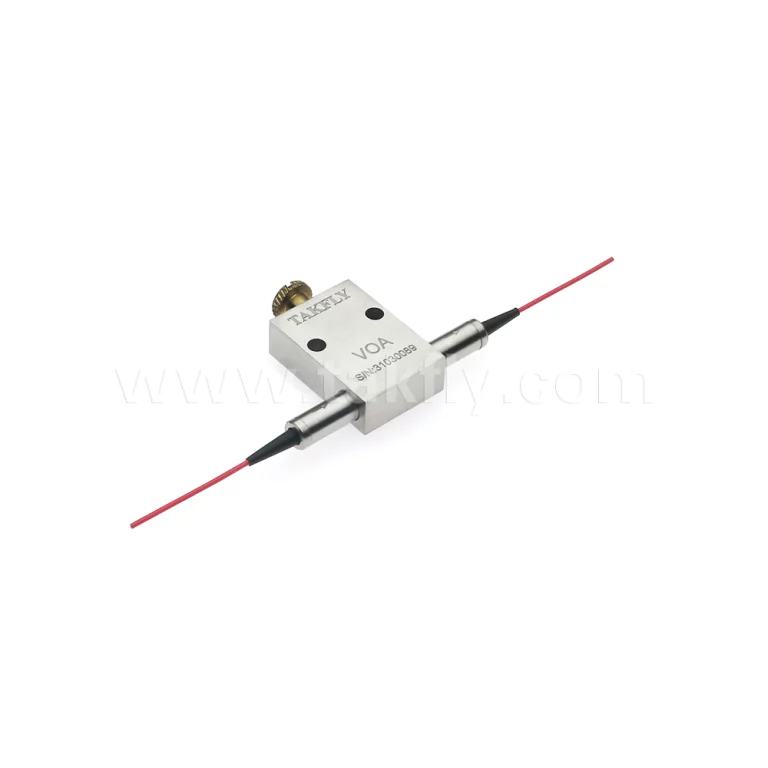Date: May 29-31, 2024
Location: 1 Expo Drive, Singapore 486150
Booth No.: 4C3-5
In the field of FTTH and Data Center, Takfly is a leading Total Solution Provider. Today, Takfly is thrilled to attend Singapore Expo 2024!
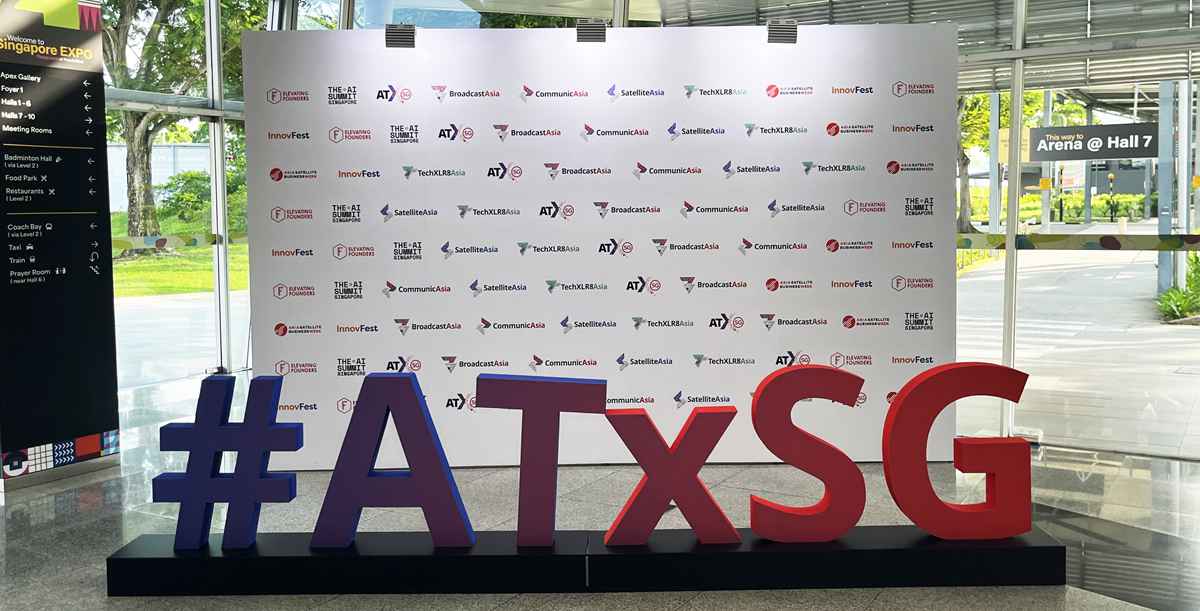
Visitors are all very excited to experience our advanced networking solutions.
More and more visitors are coming over our booth, and having a closer look at our featured products, including:
1) MPO MTP breakout cables
2) MPO MTP fiber optic cables
3) MPO MTP patch panels, optical transceiver modules
4) 8+1 channel compact Coarse Wavelength Division Multiplexer (CWDM)
5) Dense Wavelength Division Multiplexing (DWDM)
6) erbium doped fiber ampliers
7) communication systems and wdm systems accessories
1. MPO MTP Breakout Cables
MPO MTP breakout cables support superb bandwidth and scalable capacity. These fiber optic cables are vital infrastructure at high-density Data Centers. At our expo, 12F mpo – 6 uniboot LC DX breakout cable is attracting many visitors.
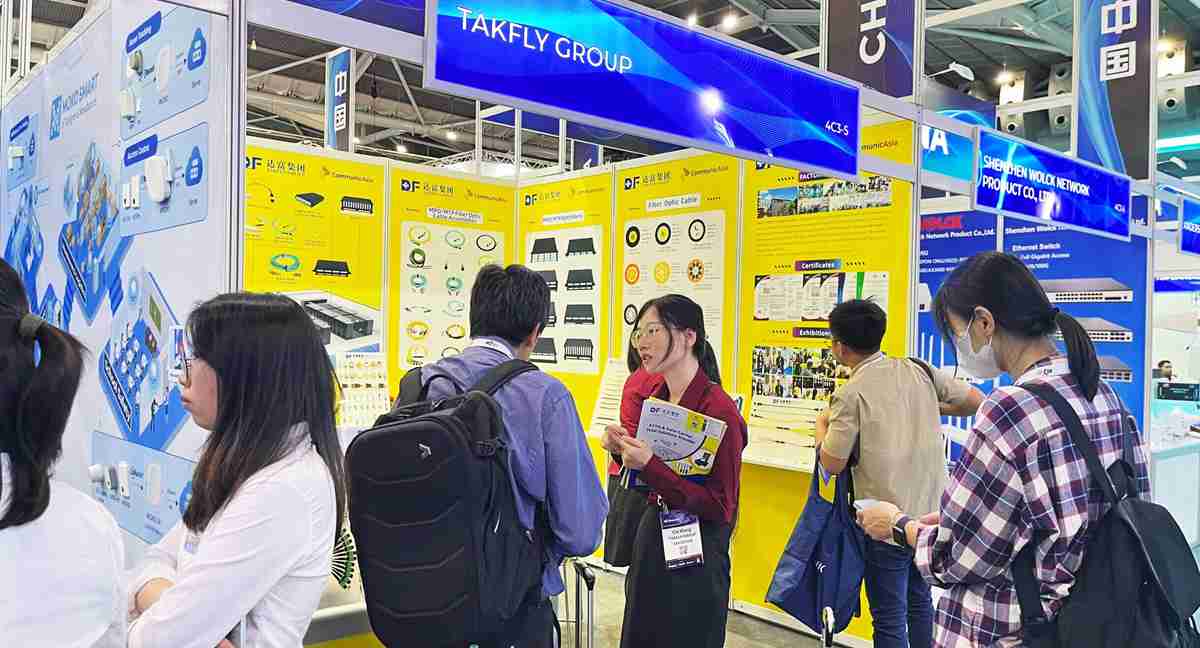
MPO breakout cable simplify infrastructure management, meanwhile it can pick up speed and reliability.
2. MPO MTP Fiber Optic Cables
Our high speed MPO fiber cables support 400Gbps and beyond. The cables ideal for cloud computing, 5G networks, and AI-driven services.
MPO MTP 16 Fiber om4 patch cord is so popular that visitors even cannot put their eyes away from it.
Why MPO MTP 16 fiber OM4 patch cord is so hot?
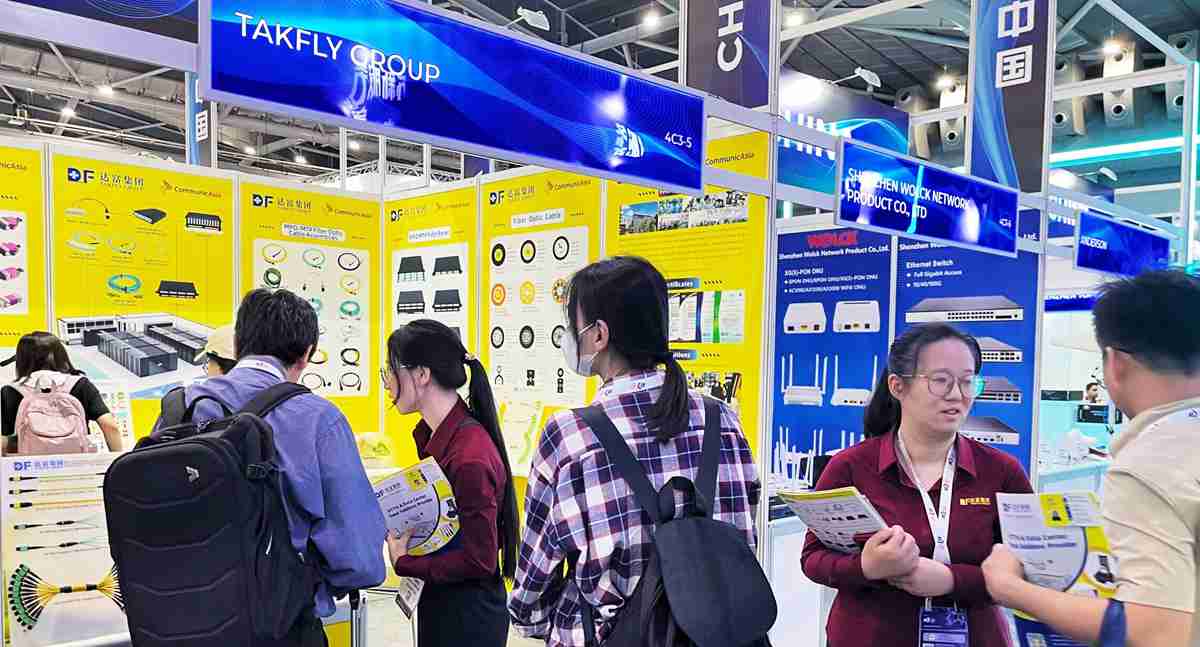
Takfly engineering team listed 6 points to explain the reasons.
• High Bandwidth
These patch cords support massive data throughput, perfect for data-intensive applications.
• Space Efficiency
The compact design allowing for better airflow and easier maintenance.
• Ease of Installation
Push-on connection mechanism. They are particularly useful when deploying parallel optics links.
• Faster Deployment
Pre-terminated MPO MTP solutions speed up deployment times, meanwhile, reduce downtime and lower installation costs.
• Future-Proofing
With the capability to support speeds 400Gbps to 800Gbps, OM4 fibers ensure your network is ready for upcoming advancements.
• Wide applications
Our 16 fiber cords have a wide applications. For example, they can be used as backbone cabling between switches, or linking servers in a rack and more.

3. MPO Patch Panels
Our MPO patch panels are flexible, easy to use. The panels facilitate fiber links to quick deployment and reconfiguration.
Our 1U 96F Slidabe patch panel is so popular that visitor even could not put it down.
Do you plan to expand your infrastructure? Or considering deploy a new one? Come on, our patch panels promise seamless integration, with test proven minimal optical signal loss.
4. Optical Transceiver Modules
These transceivers enable seamless data transfer across networks, without compromising on speed or reliability.
“How it can optimize network speed?” One visitor asks.
“How it can reduce maintenance costs?” another visitor asks.
Our engineer team answers one by one, and lots of visitors thumps up with satisfaction.
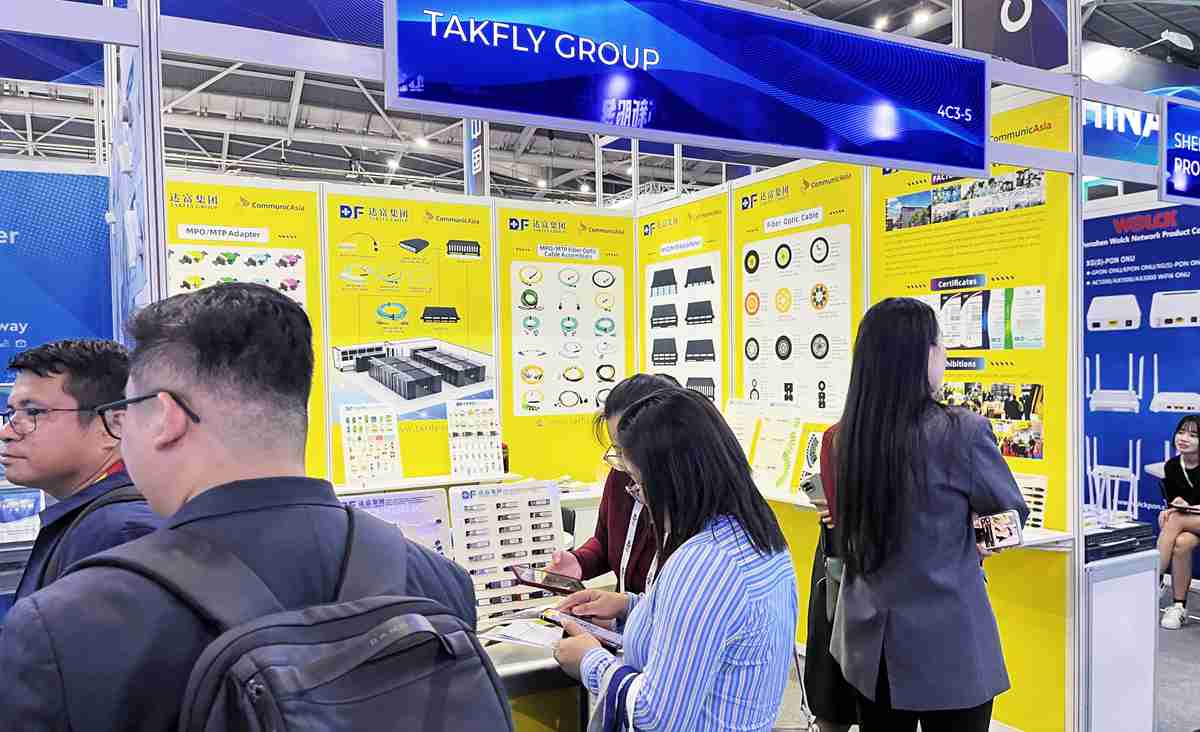
On request, our engineer team is very happily to share the installation process ofMPO breakout cables step-by-step.
Step-by-Step Installation Guide for MPO Breakout Cables
MPO breakout cables boost transmitting data at pretty high speed, but suppose something goes wrong in installation, it would be goes to another scenery, so this is why at following we will tell step-by-step to get it installed properly.
Step 1: Preparation
• Gather Tools and Safety Gear
Get tools nearby.
Tool list:
1)a fiber optic stripper
2)a fiber cleaver
3)a cleaning kit
4)an MPO adapter
5)safety goggles
• Inspect the Cable
Before starting, visually inspect the MPO breakout cable for any signs of damage. Confirm that the cable meets the specifications requirement.
Step 2: Site Preparation
• Safety First
Put on safety goggles to protect your eyes from fiber shards and dust.
• Determine Cable Route
There are 2 steps
1) clear up obstacles;
2) adheres to bend radius guidelines to prevent signal loss.
Step 3: Cable Termination
• Remove Outer Jacket
There are 3 steps
1) holding the fiber optic stripper;
2) carefully remove the outer jacket of the MPO cable;
3) exposing the MPO connector and buffer tubes, be careful, not to damaging the fibers.
• Separate Buffer Tubes
If your MPO cable has buffer tubes, gently separate them according to color coding or numerical indicators.
• Strip Individual Fibers
For each buffer tube, carefully strip back the buffer to expose the individual fibers. Use the stripper tool specifically designed for 250 µm fibers, be careful not to nick or bend the fibers.
• Cleave Fibers
Utilizing a fiber cleaver, precisely cleave each fiber to the recommended length, typically around 8-10 mm.
• Clean Fibers
Use an alcohol wipe or cleaning kit to thoroughly clean both ends of each fiber, removing any dust or debris.
Step 4: How to get connected?
• Prepare Connectors
Please refer manual to pick the right connectors, such as LC, SC, or other types.
• Crimp or Polish
Some connectors require crimping, while others need to be polished. Use the appropriate tooling for the type of connector you’re working with.
Step 5: Testing
• Insert MPO Adapter
There are 2 steps
1) insert MPO adapter into the MPO side of the cable;
2) connect MPO adapter to equipment.
• Test Each Fiber
Use a fiber optic tester to verify signal quality of each fiber strand. This step is to ensure the cable is functioning optimally before final installation.
Step 6: Installation and Routing
• Connect to Equipment
There are 2 steps
1) carefully plug the MPO connector into the MPO port on your equipment;
2) insert the LC/SC connectors into respective ports.
• Secure Cables
Use cable ties, Velcro straps, or cable managers to neatly route and secure the cables, avoiding sharp bends or crushing.
Step 7: Final Inspection and Documentation
• Inspect Connections
Double-check all connections for proper seating and security.
• Document Installation
Record cable routes, connector types, and test results for future reference and maintenance.
Following these steps carefully, you will be make the installation job well done. When you enjoying the enhanced network performance, you definitely have so many reasons to be proud of your hard work.
During noon break, one visitor approaches us and asks, “What advantages do MPO breakout cables have? Compare to traditional fibers.”
Our on-site engineer team is very happily provide a complete answer.
Here’s a comparison between MPO breakout cables and traditional fiber:
1. Speed and Bandwidth:
• MPO Breakout Cables
These cables delivers at very high speeds.
A typical MPO connector holds 12 -72 fibers, each fiber transmitting data at speeds suit for 10Gbps, 100Gbps, or even 800Gbps applications. This is why MPO breakout cables ideal for data center applications, with large amounts of data transferred rapidly.
• Traditional Fiber Setups
Traditional fiber setups, such as those using LC or SC connectors, usually support single or duplex fiber connections. Typically rated for 1Gbps or 10Gbps speeds per fiber.
The traditional fibers can also support high-speed applications, however, they need more physical space and do more connections.
Efficiency and Density:
• MPO Breakout Cables
The primary advantage of MPO cables lies in their ability to significantly increase connection density.
With many fibers in one cable, they reduce the overall footprint and cable clutter, simplifying cable management. They also facilitate quick deployment of high-bandwidth links, making them highly efficient for data center installations.
• Traditional Fiber Setups
Traditional fiber connections tend to be less dense, because the use of individual cables for each fiber pair.
This can lead to more complex cable management, meanwhile increased space requirements, especially in scenarios demanding high fiber counts.
Installation and Maintenance
• MPO Breakout Cables
At first, setting up MPO cables needs some extra planning, like checking the right connections, but after that, they make maintenance and upgrades simpler.
With our MPO breakout cables, it is easy to make changes or add more connections. You usually just need to switch or add small parts, not lay new cables.
• Traditional Fiber Setups
Installing and maintaining numerous individual fiber cables can be more time-consuming and labor-intensive.
In traditional fiber systems, every connection is dealt with individually. Plus, more maintenance increases the mistakes and system downtime.
Simply put, our affordable MPO breakout cables outperform traditional ones, as we can see MPO breakout cables boost faster speeds, better efficiency, and most importantly, easier maintenance and great room for growth.
The 2024 ATxSG-CommunicAsia event is buzzing with exciting moments.
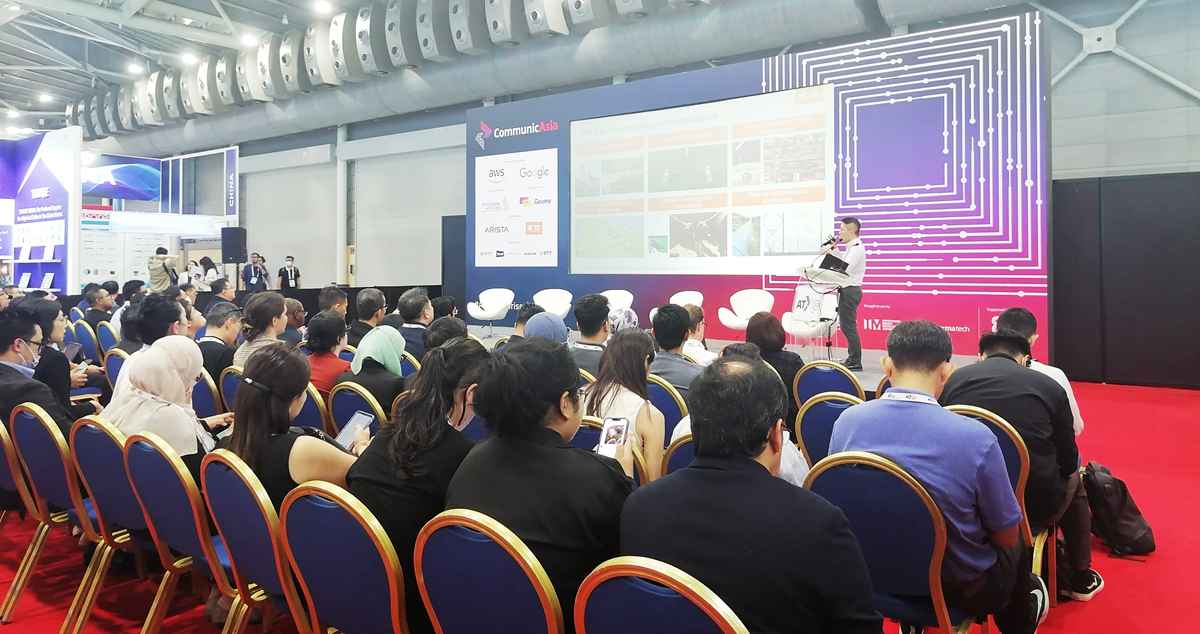
To our distinguished visitors, esteemed clients and supporters, We are deeply grateful for your presence at our booth. Your unwavering support and interest in our event are the cornerstones of our success.
Takfly feels honored to share this great journey with you all, please feel free to contact us, anytime, anywhere. Takfly will continue devoted to supporting your growth every step of the way.

